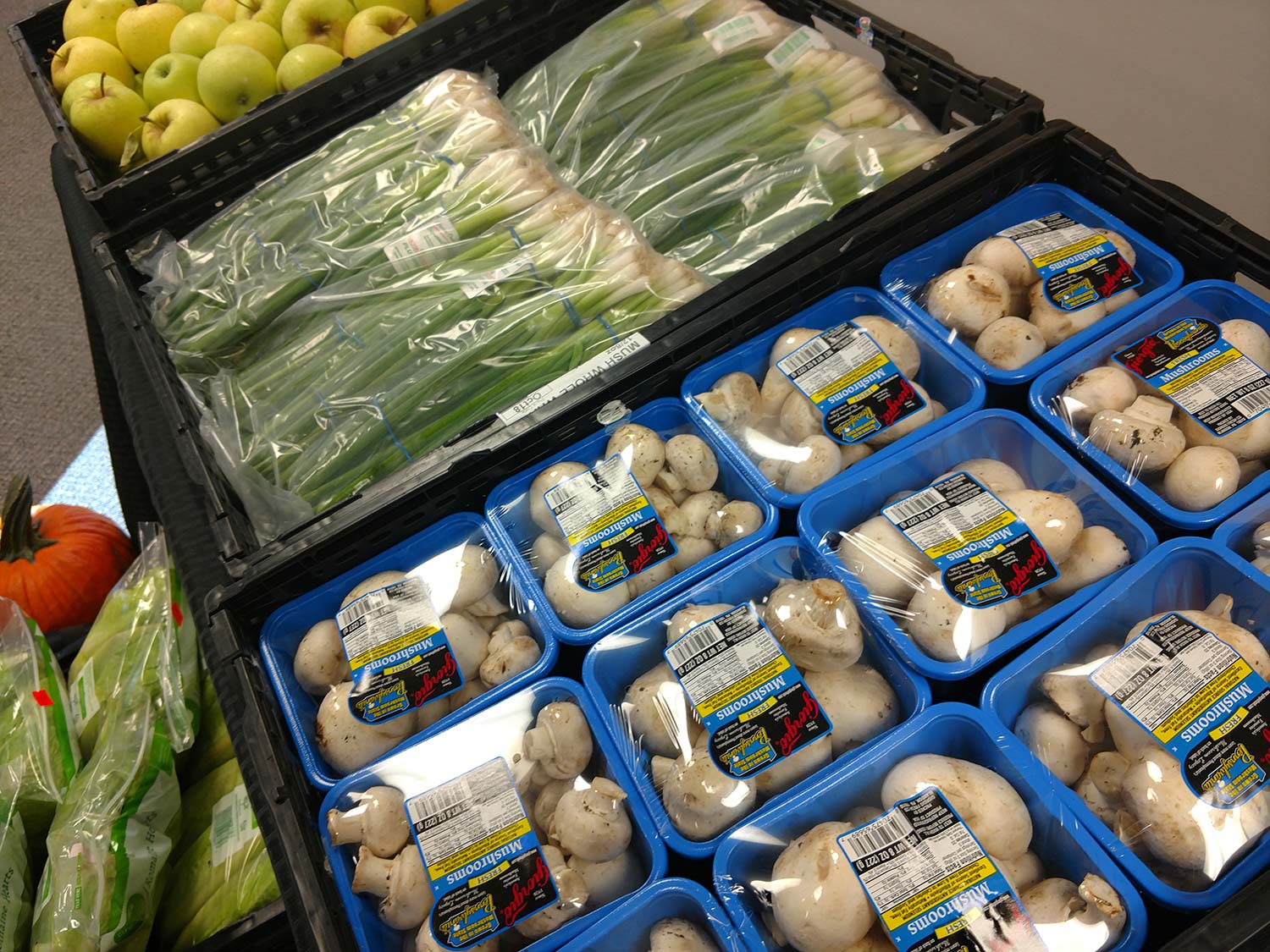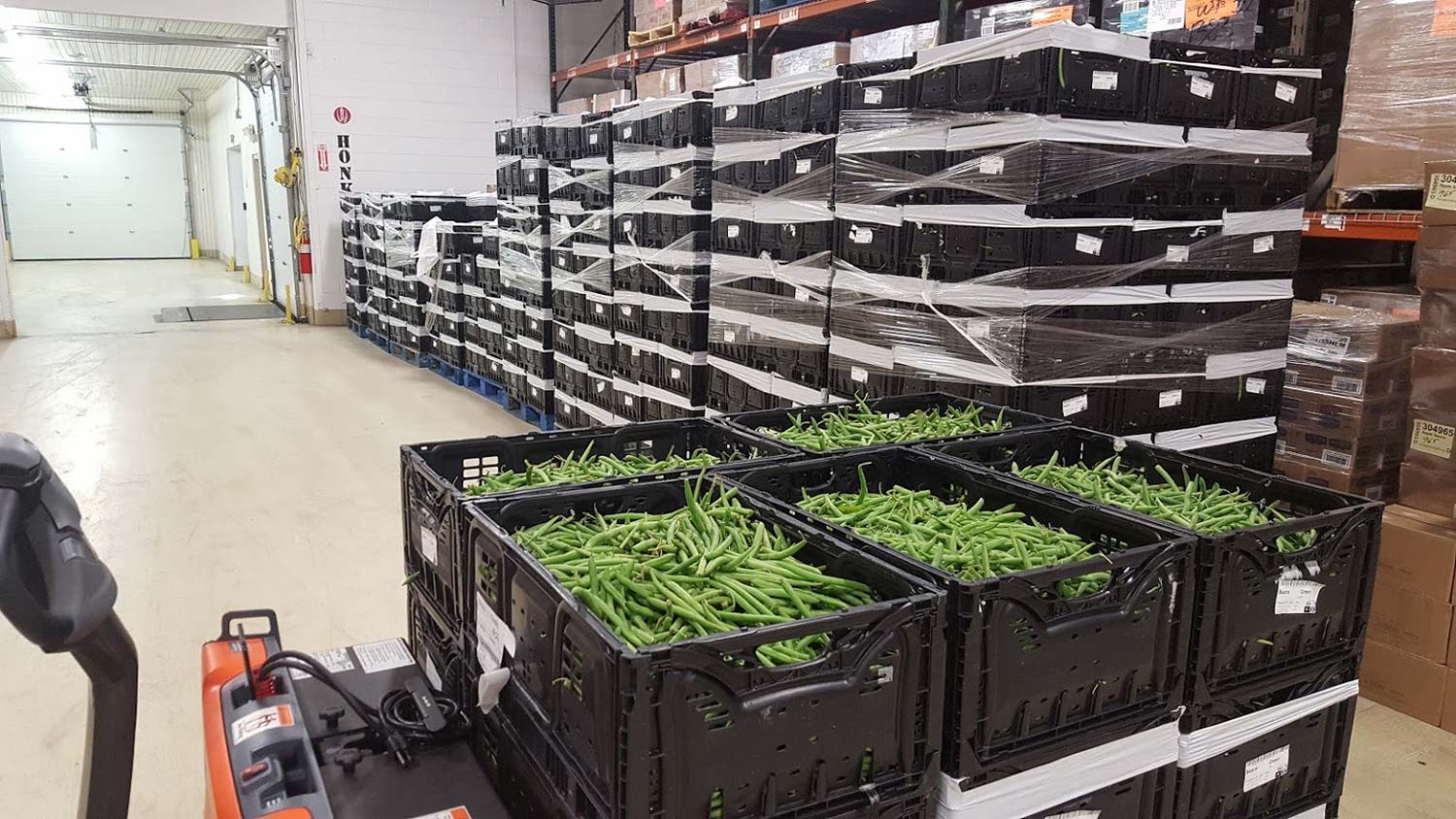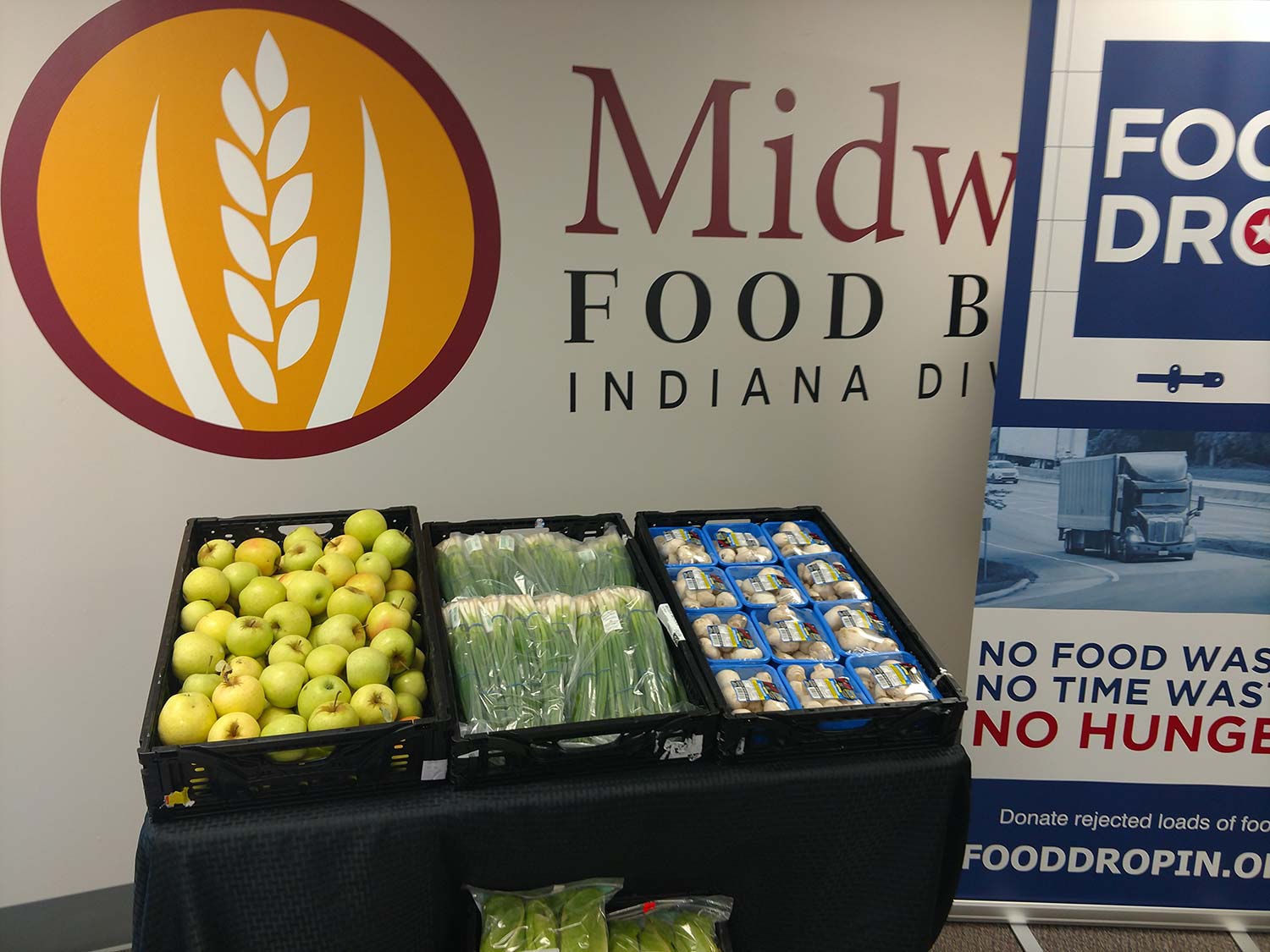Hunger Relief at the Crossroads of America
After a successful pilot program that distributed unwanted food to those who wanted it most, the nonprofit collective Indy Hunger Network announced the expansion of its Indy Food Drop program into Food Drop IN.
“There is a need, especially for healthy and fresh food,” said Kate Howe, Managing Director of Indy Hunger Network, at a 2018 press conference that announced the program’s expansion. “The more we’re able to provide for them for free through our networks, the better off folks in our community are going to be.”
The new statewide program partners with nine hunger relief organizations across the state to rescue truckloads of food rejected from grocery stores and share that food with families in need. Indy Hunger Network led the pilot project, which began in Spring 2017, that effectively brought in 86,979 pounds of food valued at $146,994.51, re-routing produce destined for landfills to hunger relief organizations.
Here’s how they do it.
 Healthy apples, green onions, mushrooms, and lettuce have all been received through the Food Drop program.
Healthy apples, green onions, mushrooms, and lettuce have all been received through the Food Drop program.
Provided by Alex Sindorf, Indy Hunger Network.
FROM DUMPS TO DONATIONS
According to Food Drop IN, nearly one million trucks travel through Indiana every single day, many transporting perishable food items to grocery stores. However, the food doesn’t always end up on the shelves. It can be rejected by the grocery industry’s high standards.
“Food can get rejected for a variety of reasons. The temperature of a trailer can get too warm or cold, a truck can have mechanical issues causing delay, products get damaged en route, mistakes in ordering can cause the wrong items or amount of produce to be delivered, or products can fail to meet the standards of the store in other ways. Fruits, vegetables and dairy are most likely to be rejected because of shorted shelf life. Incidentally, these are the items food pantries and hungry households need most,” according to the Indy Hunger Network website.
Even if the food is still healthy and edible, it often ends up in landfills, as regulations force grocery stores to reject the shipment and truck drivers to dump it. Ultimately, drivers have to make the tough decision to dump the food when there are no alternative options available.
“Food Drop is changing that by making donation the easiest and cheapest option for dealing with rejected loads,” explains the Indy Hunger Network website.
Instead of heading to landfills, truck drivers can head to any of the nine hunger relief organizations participating in Food Drop. The organizations are prepared day and night, 24/7, to accept large and small donations, from one pallet to an entire truckload. Drivers who donate unwanted food receive help unloading their trucks and a tax-deductible donation receipt. Drivers also avoid paying any landfill feeds and Food Drop IN keeps the food out of landfills.
“A project like this really makes sense in Indianapolis and in Indiana, The Crossroads of America, where we have so many trucks passing through the state. Also, when we have such a high prevalence of hunger in our communities. To have a project that’s working with those two areas together and making things easier for truck drivers, but also meeting some of the needs in our communities, really just makes sense,” says Alex Sindorf, the Food Systems Coordinator for Indy Hunger Network.
 Drivers can donate shipments of all sizes, such as this large donation that included vibrant green beans.
Drivers can donate shipments of all sizes, such as this large donation that included vibrant green beans.
Provided by Alex Sindorf, Indy Hunger Network.
WASTE NOT, WANT NOT
The idea for Food Drop came from John Whitaker, Executive Director of the Midwest Food Bank.
“John knows the needs of the community. He knows how important hunger is in our community. And, he has good relationships with the trucking industry and the Indiana Motor Truck Association. He also has a background in grocery stores. So, he knew this issue well, and I think with the Indy Hunger Network, he found an opportunity to mention this idea,” Alex says.
“The Indy Hunger Network is all about collaboration and starting projects that involve multiple different agencies, so the Indy Hunger Network allocated $10,000 of its budget to start a pilot project in Indianapolis. We developed the idea just to see if it would work. We worked with four different agencies in Indianapolis for a six-month pilot project. And it went really well. And Midwest Food Bank was one of the initial agencies that received the food. They’re still involved. They’ve helped us ramp it up and move statewide,” she adds.
With nine hunger relief agencies now involved, truck drivers will have even more opportunities to donate rejected food.
“The Indy Food Drop pilot and its expansion, now statewide to Food Drop IN, is a great example of a simple, common-sense approach to the complicated challenge of eliminating waste and providing healthy, nutritious food at no cost to Hoosiers struggling with food insecurity,” John said at the October 23 press conference.
 Rejected loads can do a lot of good when rerouted to hunger relief agencies such as the Midwest Food Bank.
Rejected loads can do a lot of good when rerouted to hunger relief agencies such as the Midwest Food Bank.
Provided by Alex Sindorf, Indy Hunger Network.
DELICIOUS AND NUTRITIOUS
Over 40% of food is wasted in the U.S., according to the Natural Resource Defense Council. At the same time, one in six Hoosiers go hungry. Alex emphasized that the Food Drop initiative collaborates with drivers and grocery stores to fight against food waste and food insecurity.
“We’re working with truck drivers. They’re helping in the fight against hunger. Most drivers don’t want to see food go to waste. And even grocery stores don’t want to see food go to waste. But sometimes, that’s the only option. Food Drop was started in response to this issue of food waste and rejected loads. So, it helps to give truckers a way to be able to help us in our fight against hunger. And it helps the truckers as well because they don’t have to pay landfill fees, they get help unloading their truck, day or night, and they get a tax deduction,” Alex explains.
All of the donations received in the pilot program provided fresh produce, such as green beans, lettuce and potatoes, to hungry families.
“Our communities have been able to enjoy green beans, spinach, lettuce—all kinds of nutritious produce that they otherwise haven’t been able to. I think it’s a project that makes sense for everyone and hopefully helps across a few different industries,” Alex says.
In addition to fresh produce, Food Drop accepts all perishable and non-perishable food, grocery items and non-alcoholic beverages. This includes fresh, dry, refrigerated and frozen foods.
“We understand that rejected loads often have damage, imperfections and other issues, but as long as the product seals are not broken and any original labels or dates remain on the products, food banks will accept these items,” according to the Food Drop IN website.
 The Indiana Division of the Midwest Food Bank distributes its donations to food pantries and families in need.
The Indiana Division of the Midwest Food Bank distributes its donations to food pantries and families in need.
Provided by Alex Sindorf, Indy Hunger Network.
HOW YOU CAN HELP HUNGRY FAMILIES
The Indiana community can support the mission of Food Drop IN by raising awareness of the initiative.
“Talk about it and spread the word. Even if you’re not a truck driver yourself, most people probably know someone—or know someone who knows someone—who is a driver or somehow works in a grocery store or interacts with loads of food. And if the project just becomes known to more people, it will be used more,” Alex says.
As more people learn about Food Drop, drivers and grocery stores will use it more, redirecting shipments to those in need.
“I think another thing is just dealing with food waste in general. So, talking to people at your local grocery store and making sure that they know that their customers care what happens to food that gets rejected. And do they know about this project? Are they directing their rejected loads to go to a food bank instead of go to a landfill?” Alex asks.
The hunger relief organizations that participate in Food Drop IN also welcome volunteers who can share their time to help connect food to those who need it.
 Now statewide, nine hunger relief organizations accept donations through Food Drop IN.
Now statewide, nine hunger relief organizations accept donations through Food Drop IN.
Provided by Alex Sindorf, Indy Hunger Network.
These nine hunger relief organizations across Indiana participate in Food Drop IN.
St. Vincent de Paul Food Pantry
3001 30th Street
Indianapolis, IN 46218
Second Helpings
1121 Southeastern Ave
Indianapolis, IN 46202
Gleaners Food Bank of Indiana
3737 Waldemere Avenue
Indianapolis, IN 46241
Midwest Food Bank—Indiana Division
6450 S. Belmont St.
Indianapolis, IN 46217
Community Harvest Food Bank
999 E. Tillman Rd.
Fort Wayne, IN 46816
Second Harvest Food Bank of East Central Indiana
6621 N. Old State Rd. 3
Muncie, IN 47303
Food Finders Food Bank Warehouse
1210 N. 10th St.
Lafayette, IN ,47904
Hoosier Hills Food Bank
2533 W. Industrial Park Dr.
Bloomington, IN 47404
Tri-State Food Bank
801 E. Michigan
Evansville, IN 47711





